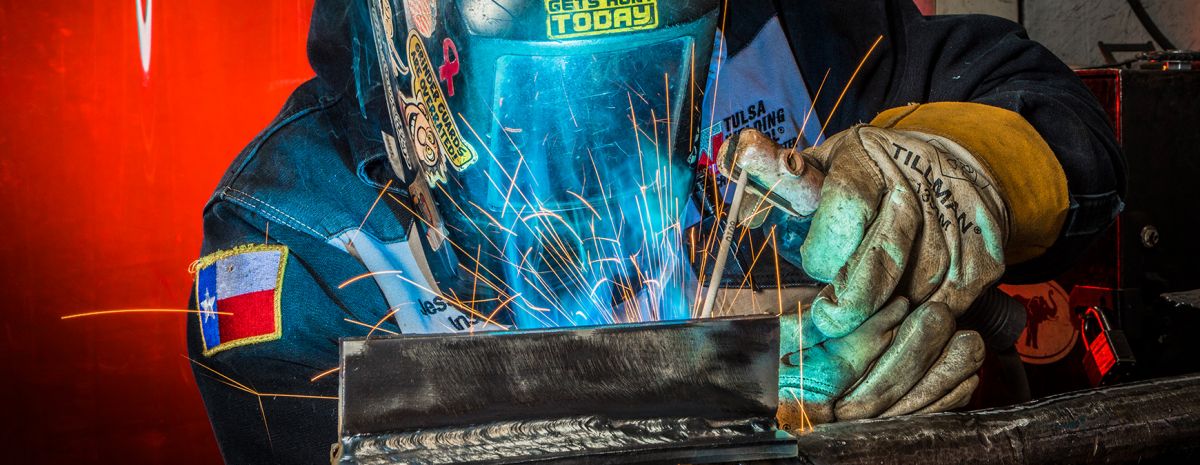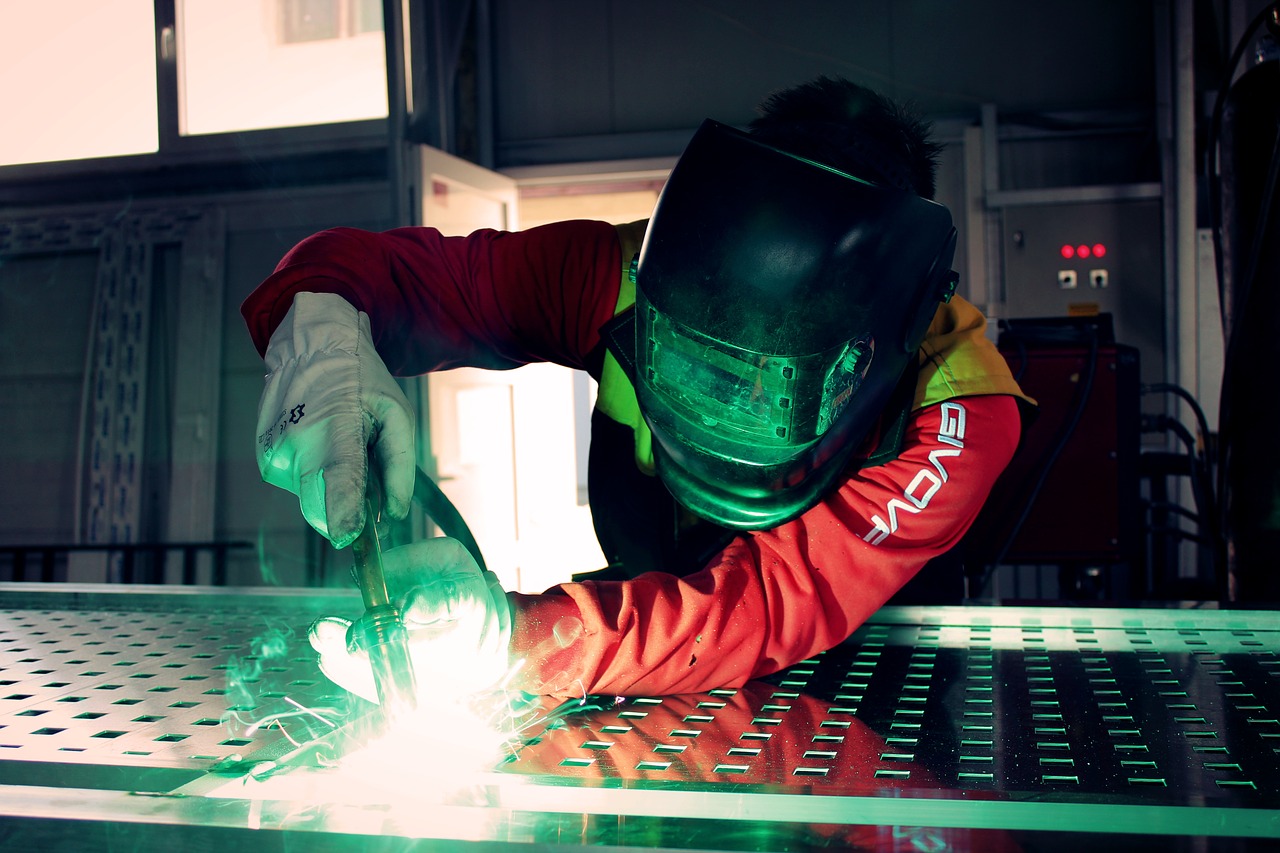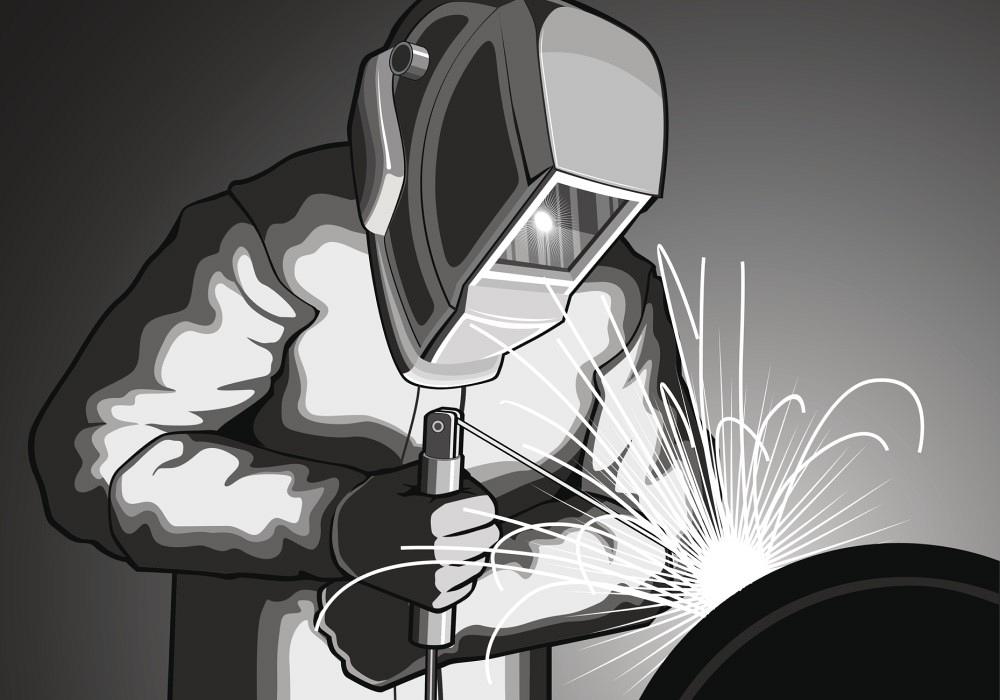Common Welding Repair Service Issues and Just How to Address Them Efficiently
Welding repairs usually come across a series of problems that can endanger the honesty of the last product. Common troubles consist of inadequate infiltration, porosity, and misalignment, amongst others. Each defect provides distinct challenges that require particular techniques for resolution. Understanding these issues is important for welders aiming to enhance their outcomes and abilities. This conversation will check out these usual welding repair issues and efficient approaches to resolve them.
Poor Penetration
Inadequate infiltration happens when the weld metal stops working to fully fuse with the base material, causing weak joints and possible structural failings. This issue usually originates from not enough heat input, wrong electrode angle, or inappropriate welding rate. Welders might experience insufficient penetration due to a mistake of the needed specifications for a specific material thickness or kind. In addition, contamination on the base material's surface can hinder effective bonding, aggravating the problem. To attend to insufficient infiltration, welders ought to guarantee suitable settings on their tools and keep a tidy job surface area. Routine evaluation of welds is suggested to recognize any kind of deficiencies early, allowing for prompt corrections and the avoidance of jeopardized structural stability in bonded assemblies.
Porosity
Porosity is a typical problem in welded joints that manifests as little gas bubbles caught within the weld steel. This issue can jeopardize the integrity of the weld, leading to lowered strength and prospective failing under stress. Welding. Porosity commonly arises from contamination, dampness, or improper welding methods, which allow gases to get away into the molten weld pool. To resolve porosity, welders ought to guarantee appropriate surface prep work, maintain a clean workplace, and utilize suitable welding criteria. Furthermore, choosing the best filler material and protecting gas can minimize gas entrapment. Regular assessment and testing of welds can aid determine porosity early, guaranteeing prompt restorative actions are taken, thereby protecting the quality and dependability of the welded framework
Imbalance
Imbalance in welding can occur from numerous factors, consisting of inappropriate setup and thermal development. Understanding the source is necessary for efficient resolution. Numerous improvement strategies are offered to realign components and guarantee architectural integrity.
Causes of Imbalance
Welding imbalance frequently originates from a selection of underlying problems that can endanger structural integrity. One key cause is inappropriate fit-up of components before welding, which can bring about gaps and uneven surfaces. Variants in thermal expansion throughout the welding process can likewise result in distortion, particularly if the products being signed up with have different coefficients of growth. Additionally, poor securing and fixturing might fall short to hold components securely in position, causing motion throughout welding. Inadequately conserved tools, consisting of welding makers and tools, may present incongruities in the weld grain, further contributing to imbalance. Driver mistake, stemming from not enough training or experience, can also play a significant function in developing misaligned welds.

Adjustment Techniques Offered
Addressing misalignment properly requires a combination of corrective methods customized to the specific concerns at hand. One common method is making use of fixtures or jigs to hold components in the correct position throughout welding, making certain constant alignment. In addition, pre-heating the materials can assist lower distortion and boost fit-up. For significant misalignment, mechanical realignment methods, such as utilizing hydraulic jacks or clamps, can be employed to fix the position before welding. Post-weld warm therapy may also be essential to alleviate anxieties triggered by misalignment. Ultimately, mindful examination and adjustment during the setup stage can protect against misalignment issues from becoming substantial problems, promoting a smoother welding process and boosting total architectural integrity.
Distortion
Distortion is an usual obstacle in welding that can arise from different aspects, consisting of uneven heating and cooling. Comprehending the causes of distortion is essential for carrying out effective prevention strategies. Resolving this concern not only enhances architectural stability but likewise improves the total quality of the weld.
Sources of Distortion
When subjected to the intense warmth of welding, products typically undergo changes that can cause distortion. This phenomenon largely occurs from thermal expansion and contraction during the welding procedure. As the weld location warms up, the product expands; upon air conditioning, it contracts, which can produce interior anxieties. On top of that, unequal heating across a work surface can exacerbate these stress and anxieties, leading to bending or bending. The kind of product also plays a significant function; metals with differing thermal conductivity and coefficients of growth may react in different ways, resulting in uncertain distortions. Additionally, inadequate joint design and insufficient fixturing can add to misalignment throughout welding, enhancing the likelihood of distortion. Understanding these reasons is crucial for reliable welding fixing and prevention approaches.
Avoidance Techniques
Reliable avoidance strategies for distortion during welding focus on regulating warm input and making certain proper joint layout. Keeping a constant warm input aids to lessen thermal growth and tightening, which can result in distortion. Using methods such as pre-heating the workpiece can likewise minimize the temperature level slope, promoting uniform heating. Furthermore, choosing suitable joint styles, such as T-joints or lap joints, can improve security and lower tension why not check here focus. Carrying out proper fixturing to secure the workpieces in position additionally help in maintaining placement throughout the welding procedure. Staggered welding sequences can disperse heat a lot more evenly, click to find out more avoiding local distortion. By applying these strategies, welders can substantially decrease the likelihood of distortion and boost the general high quality of their welds.
Splitting
Fracturing is a typical problem experienced in welding repair services, often arising from numerous elements such as inappropriate air conditioning prices, product selection, or poor joint prep work. The occurrence of splits can greatly endanger the integrity of the weld, resulting in possible failures during operation. To resolve this issue, welders should initially evaluate the source, making certain that materials work and appropriately chosen for the details application. Furthermore, regulating the air conditioning rate during the welding process is essential; rapid cooling can induce stress and cause fracturing. Correct joint style and prep work additionally add to minimizing the threat. Implementing these techniques can enhance weld top quality and sturdiness, ultimately lowering the possibility of cracking in completed weldments.

Incomplete Fusion
A substantial issue in welding fixings is insufficient combination, which takes place when the weld metal does not properly bond with the base material or previous weld passes - Belgrade Fabrication. This defect can result in weaknesses in the joint, potentially compromising the honesty of the welded structure. Aspects adding to insufficient blend include inadequate heat input, improper welding technique, and contamination of the surface areas being joined. To resolve this issue successfully, welders should ensure proper pre-weld cleaning and surface prep work, in addition to adjust their welding specifications to achieve ample infiltration and combination. Routine examination during the welding procedure can also assist determine insufficient combination early, enabling for timely corrective steps to enhance the general quality of the weld
Overheating
While welding repairs can improve over at this website architectural honesty, overheating offers a considerable challenge that can cause material degradation. Too much warmth throughout welding can change the mechanical residential or commercial properties of steels, causing lowered strength, raised brittleness, and bending. This sensation is particularly important in high-stress applications where structural dependability is extremely important. Determining overheating can entail aesthetic assessments for staining or distortion, in addition to keeping track of temperature level during the welding procedure. To minimize the threats related to overheating, welders should use ideal techniques, such as controlling warmth input, readjusting travel speed, and using suitable filler materials. Additionally, executing pre- and post-weld heat therapies can help recover material residential or commercial properties and improve the total quality of the repair, making sure long-term efficiency and safety.
Often Asked Questions
What Are the Typical Indications of a Welding Problem?

How Can I Check My Welds for High quality?
To evaluate welds for quality, one can use visual assessments, ultrasonic testing, and radiographic approaches. Each method assures architectural honesty, determines defects, and validates adherence to defined standards, eventually enhancing the reliability of the welded joints.
What Safety Safety Measures Should I Take While Welding?
When welding, one need to focus on safety and security by wearing ideal individual safety devices, making sure appropriate ventilation, securing combustible products away, preserving a clean work area, and knowing surroundings to avoid injuries and crashes.
Can I Fix a Weld Without Redesigning the Entire Joint?
Fixing a weld without redesigning the whole joint is possible, depending on the damages (Montana Mobile Welding and Repair Belgrade Welding). Methods such as grinding, including filler product, or utilizing a welding process can properly resolve details defects while maintaining the bordering structure
What Devices Are Essential for Effective Welding Services?
Necessary devices for reliable welding repairs include a welding device, cord brush, grinder, safety gear, clamps, and filler materials. Each device plays an important role in guaranteeing quality and safety during the repair service process. Porosity commonly occurs from contamination, wetness, or inappropriate welding methods, which permit gases to get away into the liquified weld swimming pool. Inadequately conserved tools, including welding devices and tools, may introduce incongruities in the weld grain, additional contributing to imbalance. When subjected to the extreme warm of welding, products often go through adjustments that can lead to distortion. Splitting is an usual issue encountered in welding repair services, commonly resulting from different variables such as incorrect air conditioning prices, material selection, or inadequate joint prep work. A substantial concern in welding repair services is insufficient fusion, which takes place when the weld steel does not appropriately bond with the base material or previous weld passes.